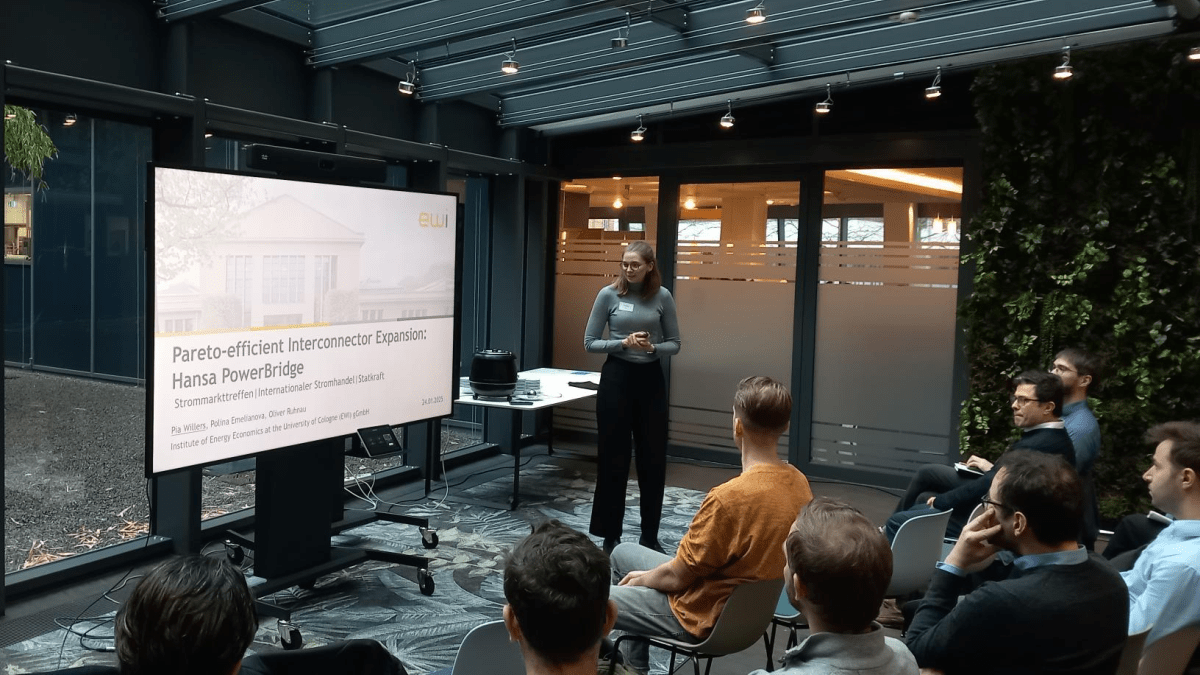
At the latest Strommarkttreffen on the topic of “International electricity trade”, participants discussed market coupling, cross-border capacities, distributional issues, and regulatory challenges. The event, held in Düsseldorf, was organized and moderated by Jun.-Prof. Dr. Oliver Ruhnau, Research Scientist at the Institute of Energy Economics at the University of Cologne (EWI). The meeting brought together experts from academia, politics, and industry to discuss the challenges and opportunities of cross-border electricity market integration and explore ways to design European electricity markets more efficiently.
During the event, EWI Senior Research Associate Pia Willers presented ongoing research on the Pareto-efficient design of interconnector expansion. The research uses the Hansa PowerBridge, a planned interconnector project between Sweden and Germany, as a case study. The Swedish government rejected the project in 2024, citing concerns about rising prices for Swedish consumers, among others.
The preliminary research results presented by Pia Willers highlighted the challenges of cross-border network expansion, particularly regarding the distribution of benefits and costs. While German consumers would benefit from lower electricity prices in all scenarios considered so far, negative effects were expected for Swedish consumers. Nevertheless, the overall economic welfare would increase in both countries. The research also indicated that an asymmetric distribution of investment costs and congestion rents could offset the losses for Swedish consumers, albeit at the expense of a negative welfare effect in Germany.
In addition to this research, further current topics related to international electricity trade were discussed. Patrick Otto from Statkraft spoke about the trading of transmission capacities between Albania and Hungary in the absence of market coupling. Kilian Zimmer from 50Hertz Transmission GmbH addressed the challenges and developments in EU electricity market coupling, while Adrian Curtze-Rodriguez from TenneT focused on the European flow-based process and intraday capacity calculation.
Further contributions at the event included Kora Töpfer (EPEX SPOT), who presented updates on European market coupling, such as intraday auctions and new 15-minute products. Anne Palenberg (BNetzA) shed light on the challenges of the EU Grid Action Plan from a regulatory perspective. Clemens Stiewe (Hertie School) analyzed the spillover effects of wind and solar energy on interconnected European electricity markets, and Manuel Eising (Baringa) highlighted the potential for coordinating offshore wind projects between the United Kingdom and the EU.
The Strommarkttreffen is an open network of several thousand experts from the energy sector, including science, politics, business, and associations. As part of the monthly series of events, energy industry research on modeling issues, energy policy, and electricity market design is discussed.